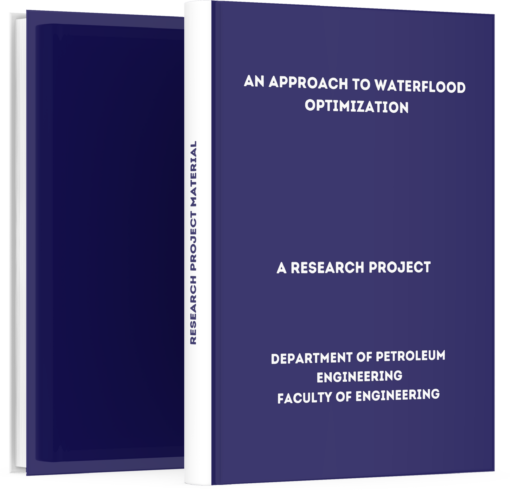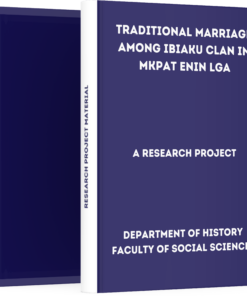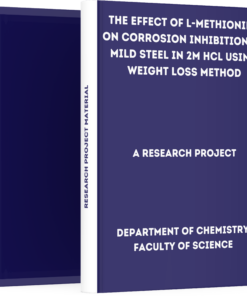An Approach to Waterflood Optimization
₦3,000.00
If you are interested in getting this project material “An Approach to Waterflood Optimization”, click on the DOWNLOAD BUTTON to make payment and the file will be delivered to your email immediately after confirmation.
Description
Download An Approach to Waterflood Optimization. Petroleum Engineering students who are writing their projects can get this material to aid their research work.
Abstract
Waterflooding is the most dominant secondary oil recovery method and its popularity is mainly due to the general availability of water, the relative ease of injecting water, the ability of water to spread easily through an oil-bearing formation and the efficiency of water in displacing oil.
However, waterflooding is not without its challenges. Factors such as reservoir heterogeneity, lateral and vertical variations in permeability and presence of discontinuities greatly affect this process.
This study is aimed at optimizing waterflooding in a case study using geostatistical reservoir characterization and simulation techniques.
The impact of variations in kV/kH ratios across the reservoir on the performance of waterflooding is analyzed. The analysis of the effects of zones of production and injection as well as the waterflood pattern selected on cumulative recovery from a waterflooded reservoir was carried out.
The waterflood patterns considered were the regular five-spot, the direct line drive and the staggered line drive patterns.
Introduction
To meet the ever-increasing demand for petroleum worldwide, it has become increasingly necessary to produce oil and gas fields more economically and efficiently.
Since a significant number of prominent oil fields are mature fields and the number of new discoveries per year is decreasing, it has become more imperative to use secondary oil recovery processes (Nwaozo, 2006).
Waterflooding is one of the most widely used secondary oil recovery means after the exhaustion of the primary depletion energy of a reservoir and it is said to be responsible for high oil production rates in mature oil fields in the U.S and Canada (Craig, 1971).
It basically involves pumping water through an injection well into the reservoir. The water then forces itself through the pore spaces and sweeps the oil towards another set of wells known as producers. As a result, there is an increment in the total oil production from the reservoir.
How to Download this Project Material
First, note that we are one of the best and most reliable online platforms because we don’t retain any of your personal information or data as regards making payments online.
PRICE: ₦3,500 ₦3,000 (Three Thousand Naira Only)
Make a bank deposit or mobile transfer of ₦2,000 only to the account given below;
Bank Name: UBA Account Number: 1022564031 Account Name: TMLT PRO SERVICES
After making the payment, CLICK HERE to send the following on WhatsApp;
- Depositor’s Name or Screenshot of Payment
- Name of the Past Question
- Active Email Address
or Call Us On +2348082284439 Once your details have been received and your payment confirmed by us, you will receive the past question in your email or WhatsApp within 5 Minutes.
Guarantee of Getting the Material
We understand that due to the high rate of fraud, many people are afraid of making purchases online but be rest assured that PastExamQuestions will deliver your material after payment.
Once your details have been received and your payment confirmed by us, you will receive the past question in your email or WhatsApp.
Give us Feedback
Have we been able to satisfy you? How well do you think the material will be helpful after having gone through it? Does the price worth the material?
Let’s hear from you! We recommend that our customers give feedback at the end of every transaction to enable us to serve better. You can do this by clicking the review button on this page.
Where is the review button? >> Just scroll up to where you see reviews





Reviews
There are no reviews yet.